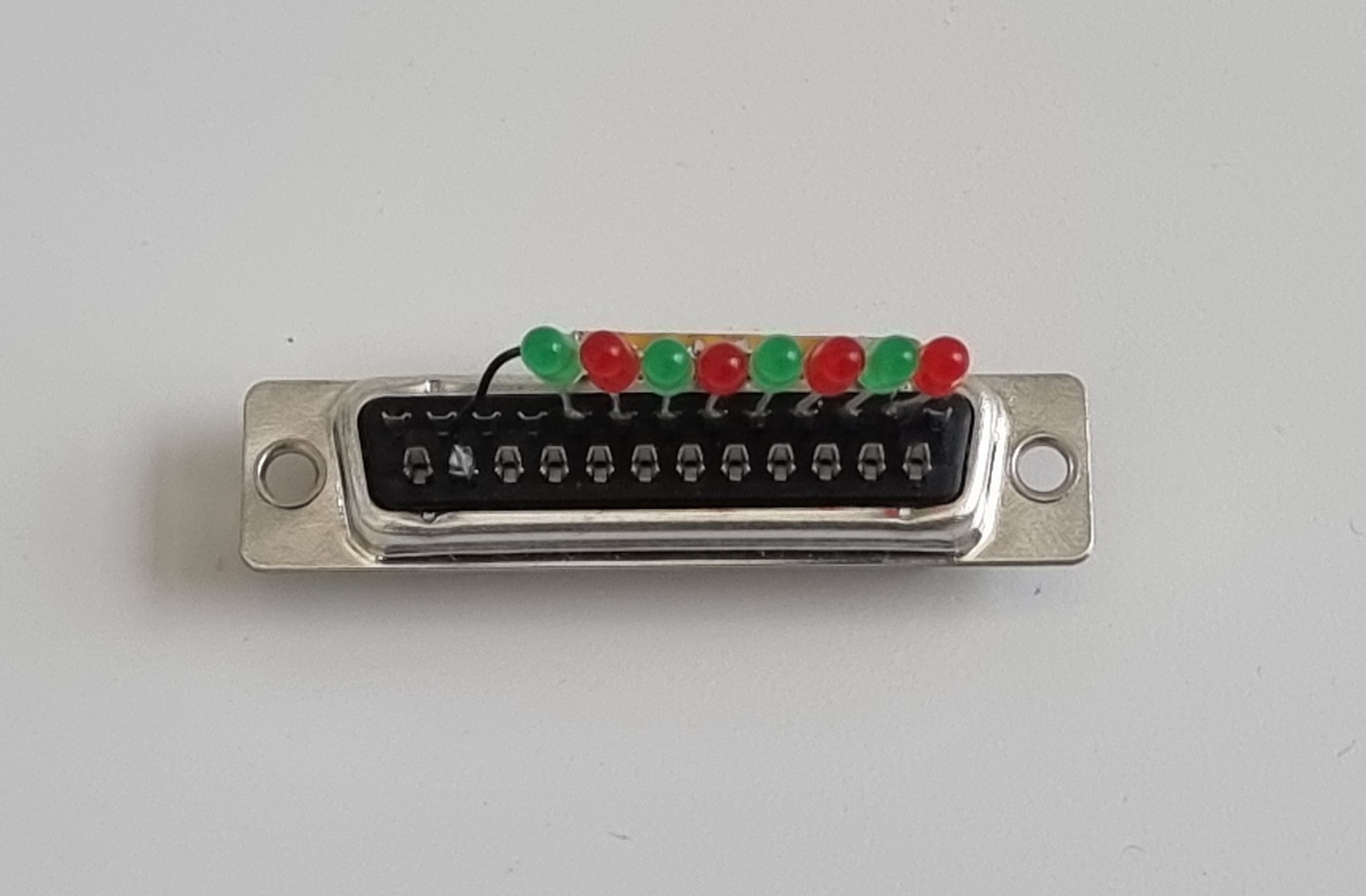Parallel Port Trigger🔗
Parallel ports (DB25) are commonly used to deliver triggers to EEG systems. The 8 data
pins D0 to D7 are used to deliver a TTL pulse on 8 bits, thus allowing for
255 different triggers (1-255) with the 0 value being reserved for the absence of a
trigger.
However, parallel ports are not common anymore on modern computers. To use a parallel port, you can either use a PCIe card or a USB-to-parallel port adapter. The platform provides those adapters using an arduino micro board.
Arduino to parallel port adapter🔗
The arduino micro board is used to convert the USB signal to a parallel port signal. Documentation about the board design can be found on the arduino-trigger repository. The converter doesn’t add any overhead, latencies are similar to an on-board parallel port.
Testing parallel port triggers🔗
To test parallel port triggers, the platform provides small testers with a DB-25 connector where the 8 data pins are connected to 8 LEDs. When a TTL signal is received, the corresponding LED lights up.

Delivering triggers🔗
Parallel port triggers can be controlled by many different software. Specificity might
differ on the software but usually you will need to specify the port address. The
address can be found in the device manager (Windows) or with ls -l /dev/parport*
(Linux).
The platform provides byte_triggers or stimuli to send triggers in paradigm using the objects:
MockTrigger(for testing purposes)LSLTrigger(for software triggers)ParallelPortTrigger(for hardware triggers)
from byte_triggers import ParallelPortTrigger
trigger = ParallelPortTrigger(0x2FB8) # hexadecimal address
trigger.signal(101)
Note
Microsoft redistributables and the
inpoutx64.dll
file in C:\Windows\system32 may be required.
from byte_triggers import ParallelPortTrigger
trigger = ParallelPortTrigger("/dev/parport0) # path address
trigger.signal(101)
from byte_triggers import ParallelPortTrigger
trigger = ParallelPortTrigger("arduino") # arduino auto-detection
trigger.signal(101)
Note
ParallelPortTrigger automatically resets the
parallel port to 0 after each trigger, in a separate thread. This avoids
blocking the main thread. The default reset delay is set to 10 ms.
Download
io64.mexw64in your MATLAB pathIn MATLAB, use the following code to send triggers between
1and255:
%% Initialize the parallel port object
address = hex2dec("2FB8"); % hexadecimal address
ioObj = io64;
status = io64(ioObj);
io64(ioObj, address, 0); % set the parallel port to 0 (default state)
%% Deliver the trigger 101
io64(ioObj, address, 101); % set the parallel port to 101
pause(0.01); % wait for 10 ms
io64(ioObj, address, 0); % set the parallel port back to 0